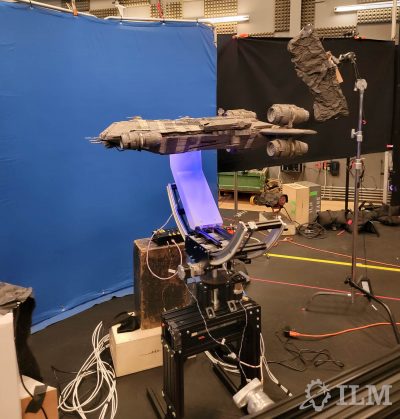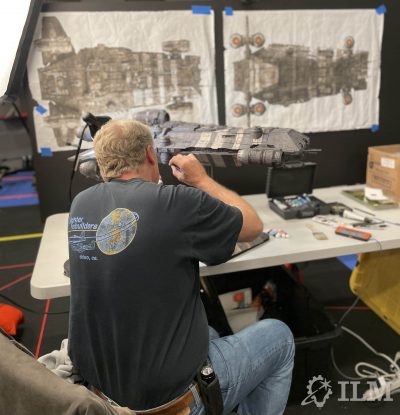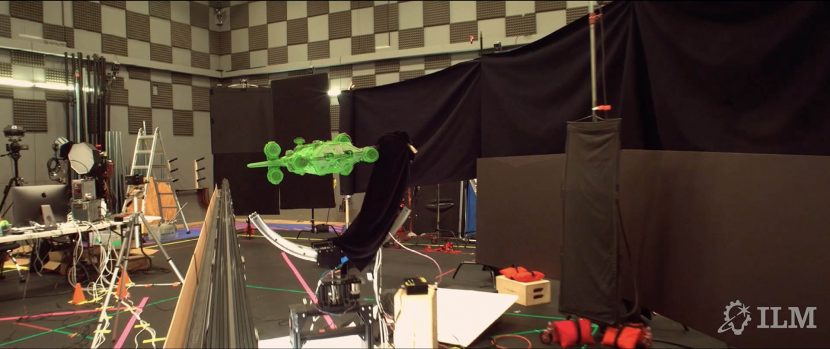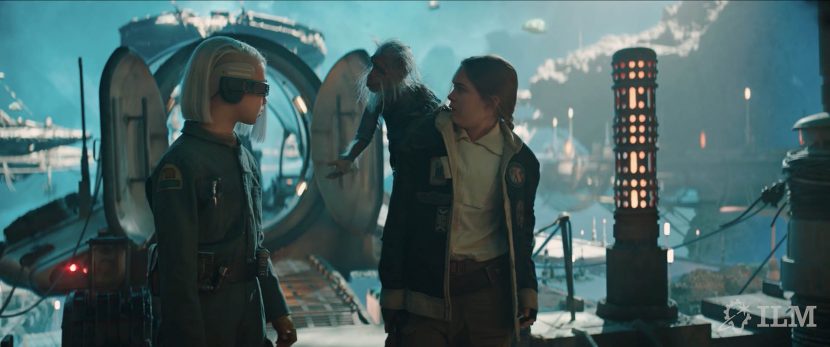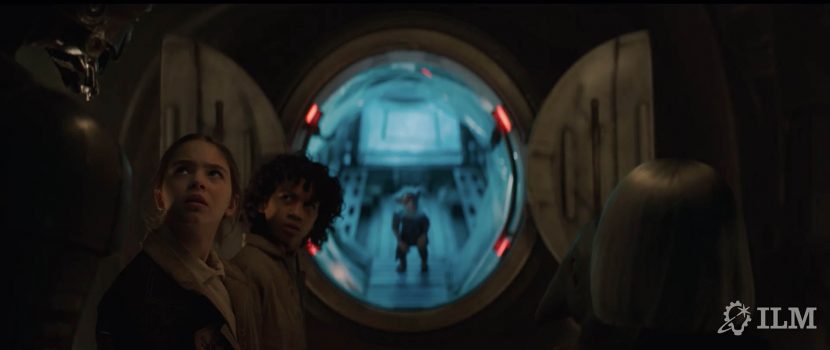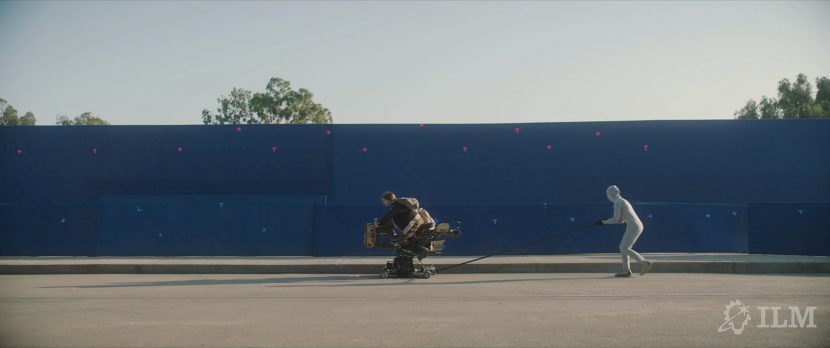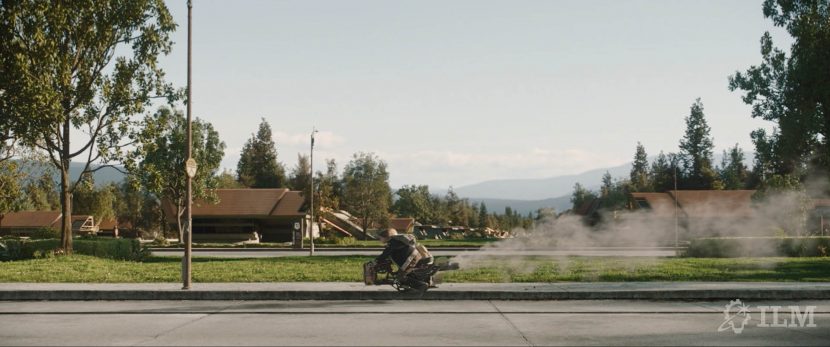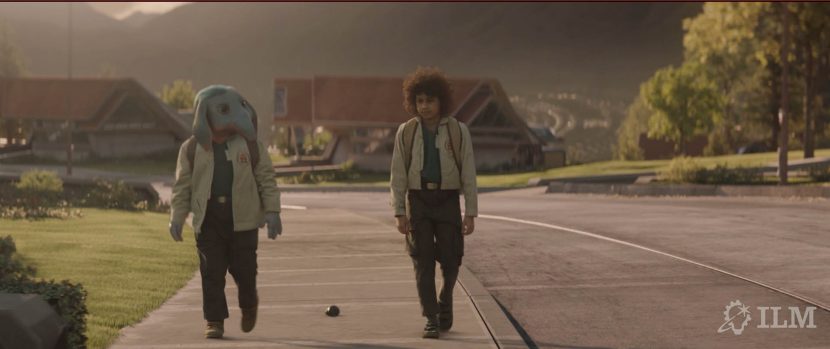When John Knoll first heard about Star Wars: Skeleton Crew in the fall of 2021, it was through a familiar channel: ILM’s Rob Bredow, asking if he’d be interested in heading up visual effects on one of Lucasfilm’s new streaming projects. For Knoll, the prospect was immediately appealing, not just because of the story’s tone or its place within what ILM affectionately calls the “Favre-verse” (the Jon Favreau–Dave Filoni era of Star Wars TV)—but also because production was based in Manhattan Beach Studios, a welcome proximity bonus given how many countries projects could now shoot in.
What sealed the deal, though, were the scripts. John Knoll was taken with their humour and spirit of the project (with early Speliberg overtones). His early meetings with director Jon Watts made it clear this was a collaboration built on trust and shared creative instinct.
And that trust was crucial. Knoll prefers to show VFX work early—early enough to course-correct meaningfully, but not so early that a client might panic at a rough version. With Watts, he found a Director open to that kind of iterative process. That kind of openness meant fewer surprises later—and, more importantly, visuals that aligned closely with the story’s intent.
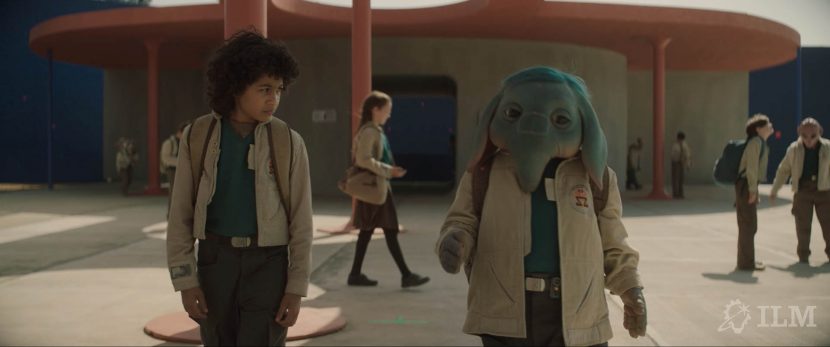
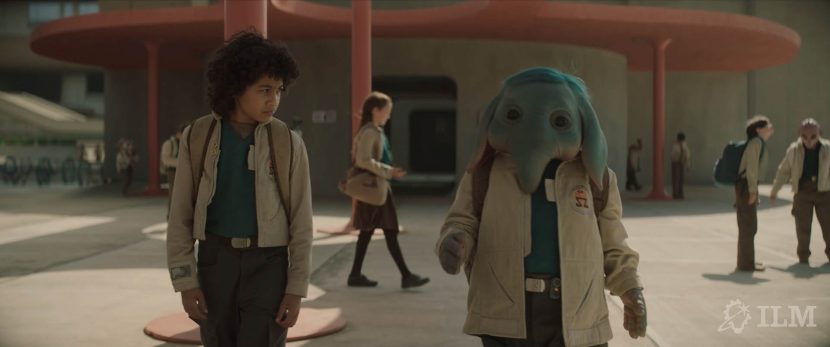
The puzzle of working with kids (and their doubles)
One of the unique challenges of Skeleton Crew was the cast itself: the show centers on a group of kids navigating a Star Wars-scale adventure. That meant tight work schedules, limited hours on set, and a heavy reliance on planning. Knoll and the team strategically structured shoot days, starting with adult doubles for wide shots and saving close-ups with the child actors for their limited hours.
The use of doubles, who were carefully matched in proportions and costuming, proved more effective than expected. In some cases, edits progressed far into post before anyone even realized a particular shot featured a double, not the child actor. “There are more shots than you’d guess,” Knoll noted. “They were pretty darn good doubles.”
Blending miniatures and digital: the art behind the illusion
Skeleton Crew continues ILM’s modern embrace of miniature photography, something that’s become a staple on Star Wars shows like The Mandalorian and Ahsoka. But for Knoll, this isn’t about nostalgia or marketing optics—it’s about results.
He recalls how The Mandalorian kicked off the return to miniatures with a bit of uncertainty. An early Razor Crest flyby received mixed feedback from Favreau—”something about it just wasn’t selling”. What began as a suggestion to build a reference model for lighting escalated into a full miniature shoot, complete with motion control. The resulting footage wasn’t just usable—it was inspiring. ILM ended up reworking their CG Razor Crest to match the practical version, and the result was indistinguishable. That pattern repeated on Ahsoka, and again with Skeleton Crew.
For Knoll, the process has become a proven workflow: shoot a beautiful miniature, use it to inform the CG model, and evolve the digital version until it’s virtually indistinguishable from the real thing. Whether it’s subtle scuff marks, directional scratches on metal panels, or the play of stylized bounce cards sculpting highlights in space, the final CG shots benefit immeasurably from miniature-informed lighting and texture references.
A puppet with personality: SM-33
When it came to SM-33, the show’s quirky droid character, Knoll leaned on a tried-and-true method: full-body puppetry with puppeteers removed in post—a technique that traces back to his work on The Phantom Menace. Drawing inspiration from Japanese Bunraku puppetry, the approach allowed for expressive, in-camera performances.
Legacy Effects built a beautifully detailed puppet, and the performance imbued it with a distinct, slightly wobbly charm. For the shots where the puppet couldn’t do what was needed—running, fighting, complex movement—CG took over. But by carefully matching the puppet’s physical quirks in animation, the handoff between real and digital remained seamless. In many shots, viewers wouldn’t know the switch had occurred at all. Knoll recalls a shot of SM-33 where he starts as a puppet, turns and walks away using a seamless handoff from puppet to fully CG animation part way through the shot.
Invisible VFX: from faceplates to falling children
Not all of the effects in Skeleton Crew are big establishing shots or complex visual effects space sequences. Some of the most difficult were the ones viewers aren’t meant to notice.
Take KB’s visor, for instance: a piece of costume design that needed to shift positions on her face. The mechanical motion couldn’t be practically achieved, so ILM animated it digitally. But that motion had secondary consequences—like changing her hairstyle as the visor moved, requiring CG hair replacement. Then there were the safety concerns: the visor’s mesh obscured vision in dark scenes, so it was sometimes omitted entirely and replaced digitally. It was clearly unsafe to have child actors walking around complex dark sets with restricted vision.
Similarly, scenes involving stunts or hazardous terrain often relied on digital doubles. For example, when the kids are ejected from garbage tubes onto a beach, “that fall was entirely CG—no safe or practical way to shoot it live”, Knoll commented. In many cases, ILM used a combination of adult stunt doubles and CG, depending on the shot and risk level.
The volume and the value of real sunlight
Skeleton Crew also made extensive use of ILM’s StageCraft volume. But Knoll is quick to point out: it’s not a blanket solution. For him, it’s a tool best used when it makes creative and logistical sense. The real benefit comes in longer scenes, where the ability to amortize the upfront content build over many pages of dialogue outweighs the cost of per-shot VFX.
And yet, despite the advances in LED volumes, Knoll remains a staunch advocate for real sunlight when it comes to outdoor scenes. “Bad daytime exteriors on a soundstage,” he says, “are the bane of my existence.” He comes armed with a library of examples—good and bad—to help DPs and production designers understand the visual trade-offs. With the right planning, he says, everyone can align early to avoid the common pitfalls.
Controlled chaos: simulated destruction and stylized space
Of course, Skeleton Crew still has its share of large-scale spectacle. From tug-of-war sequences between ships and garbage munchers, to debris-littered space battles, Knoll’s team tackled destruction scenes by starting with animation to define story intent, and then layering simulations to support and enhance the motion.
And in space, visual stylization remains key. The lighting philosophy draws from the original trilogy—a willingness to place mysterious “bounce cards” in the void for the sake of sculpted forms and cinematic readability. “You’re not trying to replicate NASA footage,” Knoll explains. “You’re trying to make something beautiful and clear.”
A playbook for better VFX
Knoll keeps a mental list of top production pitfalls, and he runs through them with every new team. From improperly lit interiors with mismatched window comps, to awkward soundstage exteriors, to vehicle shots with static lighting—he’s seen the same mistakes repeat across the industry.
Knoll has compiled a personal playbook of common VFX pitfalls, which he shares with production teams early on – and he shared with fxguide. His “Top 5 Pitfalls for VFX” includes:
- Daytime exteriors on a soundstage.
- Daytime interiors with blown-out window blue screens.
- Static lighting on moving vehicles.
- Poorly designed shots with no visual solution.
- Imbalanced composites that simply need regrading.
“Most of what goes wrong on VFX shows,” he says, “falls into one of those buckets.”
But his goal isn’t just to avoid problems; it’s to empower productions to get it right from the start, and that ethos runs through every frame of Skeleton Crew. It’s a show where high-end visual effects serve a heartfelt, youthful adventure—and where the seamless blend of puppetry, miniatures, CG, and practical lighting creates a galaxy that feels every bit as lived-in and magical as the Star Wars of our childhoods – that inspired so many of us to enter Visual Effects.


